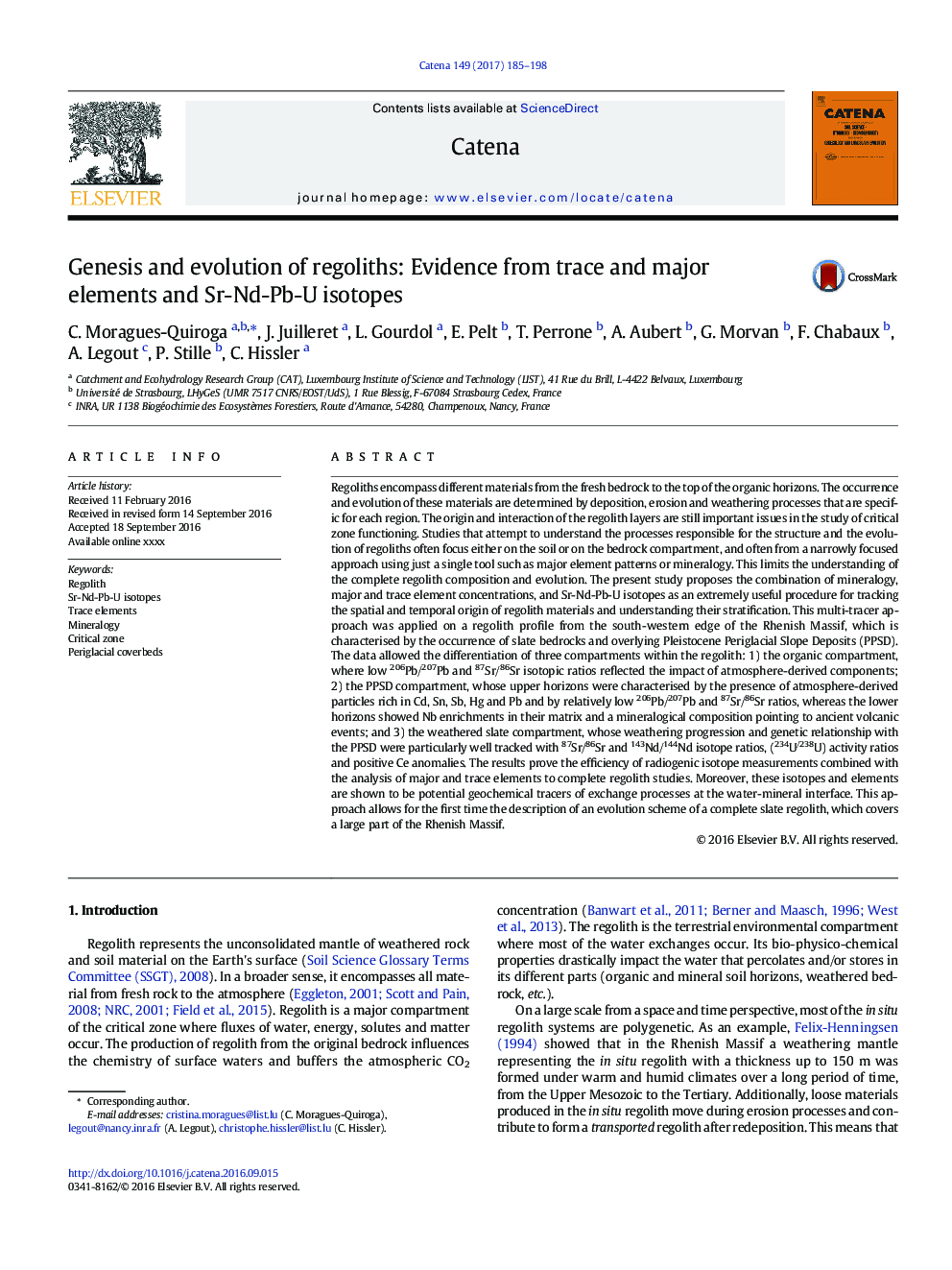| Article ID | Journal | Published Year | Pages | File Type |
|---|---|---|---|---|
| 10997826 | CATENA | 2017 | 14 Pages |
Abstract
Regoliths encompass different materials from the fresh bedrock to the top of the organic horizons. The occurrence and evolution of these materials are determined by deposition, erosion and weathering processes that are specific for each region. The origin and interaction of the regolith layers are still important issues in the study of critical zone functioning. Studies that attempt to understand the processes responsible for the structure and the evolution of regoliths often focus either on the soil or on the bedrock compartment, and often from a narrowly focused approach using just a single tool such as major element patterns or mineralogy. This limits the understanding of the complete regolith composition and evolution. The present study proposes the combination of mineralogy, major and trace element concentrations, and Sr-Nd-Pb-U isotopes as an extremely useful procedure for tracking the spatial and temporal origin of regolith materials and understanding their stratification. This multi-tracer approach was applied on a regolith profile from the south-western edge of the Rhenish Massif, which is characterised by the occurrence of slate bedrocks and overlying Pleistocene Periglacial Slope Deposits (PPSD). The data allowed the differentiation of three compartments within the regolith: 1) the organic compartment, where low 206Pb/207Pb and 87Sr/86Sr isotopic ratios reflected the impact of atmosphere-derived components; 2) the PPSD compartment, whose upper horizons were characterised by the presence of atmosphere-derived particles rich in Cd, Sn, Sb, Hg and Pb and by relatively low 206Pb/207Pb and 87Sr/86Sr ratios, whereas the lower horizons showed Nb enrichments in their matrix and a mineralogical composition pointing to ancient volcanic events; and 3) the weathered slate compartment, whose weathering progression and genetic relationship with the PPSD were particularly well tracked with 87Sr/86Sr and 143Nd/144Nd isotope ratios, (234U/238U) activity ratios and positive Ce anomalies. The results prove the efficiency of radiogenic isotope measurements combined with the analysis of major and trace elements to complete regolith studies. Moreover, these isotopes and elements are shown to be potential geochemical tracers of exchange processes at the water-mineral interface. This approach allows for the first time the description of an evolution scheme of a complete slate regolith, which covers a large part of the Rhenish Massif.
Related Topics
Physical Sciences and Engineering
Earth and Planetary Sciences
Earth-Surface Processes
Authors
C. Moragues-Quiroga, J. Juilleret, L. Gourdol, E. Pelt, T. Perrone, A. Aubert, G. Morvan, F. Chabaux, A. Legout, P. Stille, C. Hissler,
